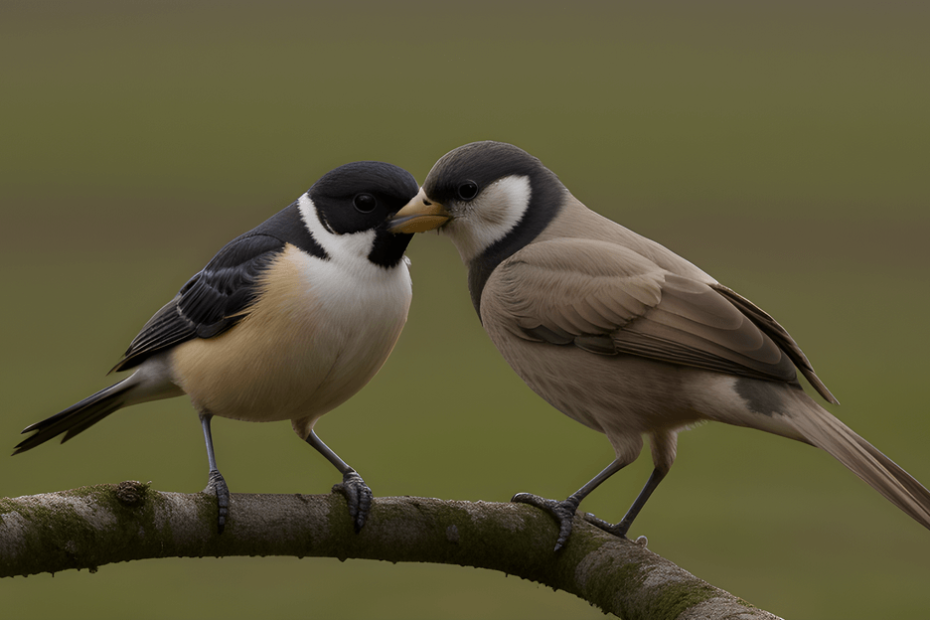Key Takeaways
- Bird “kissing” is a behavior that reflects bonding and affection among birds, often seen as a part of courtship rituals during the breeding season.
- Understanding the significance of bird “kissing” during mating season helps in appreciating the complexity of their courtship and pair bonding behaviors.
- Recognizing the role of monogamy and pair bonding in birds, along with their elaborate courtship, sheds light on their long-term commitment and social structures.
- Observing bird communication, emotional intelligence, and courtship displays provides insights into their social dynamics and relationships.
- Social grooming and regurgitation, also known as beak kissing, are natural displays of affection in birds, highlighting their emotional connections with each other.
- Distinguishing between aggressive and affectionate behavior in birds, such as courtship displays and beak kissing, is essential for interpreting their interactions accurately.
Introduction
I’ve always wondered, do birds kiss? It’s a fascinating question that delves into the emotional lives of many bird species. While we often associate kissing with humans, observing bird behavior can reveal surprising similarities and differences. From courtship rituals to bonding displays, avian interactions offer intriguing insights into their social dynamics and behavior. Join me as we explore the captivating world of bird behavior, including “billing” and uncover whether their actions could be interpreted as “kissing.” We’ll compare these behaviors to our understanding of affection and connection, shedding light on the diverse ways different species express intimacy.
Do Birds Kiss? Bird Kissing Behavior Explained
Social Bonding
Bird ‘kissing’ involves gentle beak touching and mutual preening. This behavior, known as “billing,” is a way for birds to express affection and strengthen their social bonds. When birds engage in this behavior, they are essentially showing trust and care for one another.
Birds often ‘kiss’ as a form of pair maintenance, especially among mates. By engaging in this behavior, they reaffirm their bond with each other. Bird ‘kissing’ behavior is not limited to mating pairs; it can also occur between family members or members of the same flock.
This act of affectionate bonding through beak touching, or kissing, helps establish and maintain relationships within the bird community. It’s similar to how humans hug or hold hands to show love and care for one another.
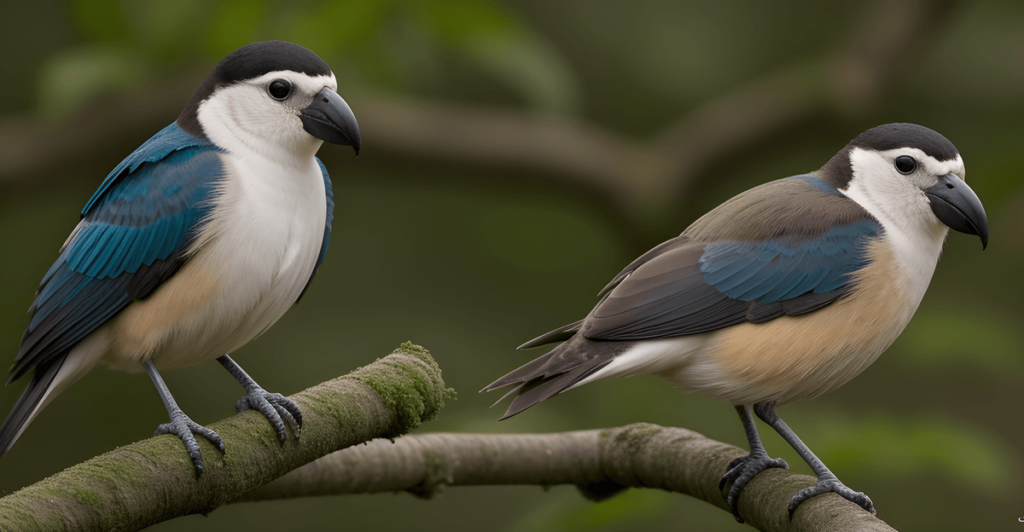
Types of Bird ‘Kissing’
There are different types of bird ‘kissing,’ each serving its own purpose in avian social interactions. For example, some species engage in mutual preening where birds groom each other’s feathers using their beaks. This grooming not only helps keep the feathers clean but also reinforces social bonds among the individuals involved.
Another type involves regurgitation feeding, where a bird brings up food from its crop to share with its mate or offspring through direct beak-to-beak contact. This sharing of food plays a crucial role in strengthening familial ties among birds.
In some cases, beak tapping or pecking can also serve as an expression of affection or dominance within a group of birds. These various forms of bird ‘kissing’ contribute significantly to maintaining harmony and unity within avian communities.
Personal information: I once observed two lovebirds gently touching their beaks together while perched on a branch outside my window. It was heartwarming to see how such simple gestures play an essential role in their relationship.
The Significance of Bird “Kissing” in Nature
Reinforcing Social Bonds
Bird ‘kissing’ reinforces social bonds within a flock or pair. This behavior is crucial for maintaining harmony and cooperation among the birds. For example, when two lovebirds gently tap their beaks together, it signifies trust and affection, strengthening their bond.
In many bird species, kissing is an intimate act that promotes unity and solidarity within the group. When birds engage in this behavior, it’s a sign of mutual respect and cooperation. By touching beaks or rubbing cheeks together, they establish a sense of togetherness essential for their survival.
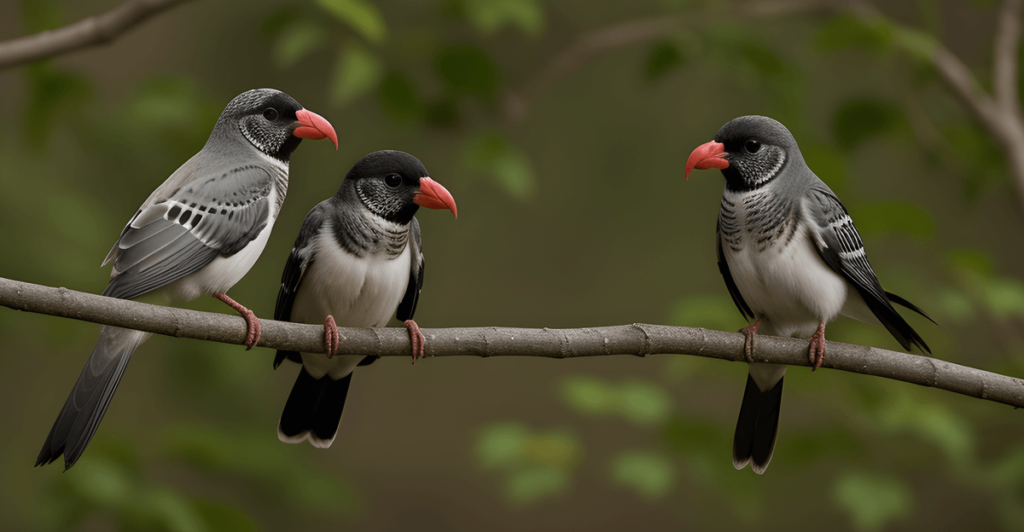
Signifying Trust and Cooperation
The act of beak kissing among birds goes beyond mere physical contact; it symbolizes deep emotional connections. It’s comparable to human kissing as an expression of love and intimacy. Just as humans use kisses to convey affection and trust, birds utilize similar actions to signify companionship within their flocks or pairs.
When observing bird interactions closely, one can notice how these gestures play a vital role in reinforcing territorial boundaries. By engaging in gentle beak touches or cheek rubs with fellow members of the group, birds communicate ownership over specific areas without resorting to aggression.
I find it fascinating how such seemingly simple behaviors hold significant meaning for our feathered friends. Understanding these nuances allows us to appreciate the complexity of avian communication on a deeper level.
Unraveling Bird Courtship Rituals and Displays
Elaborate Rituals
Bird courtship rituals are fascinating behaviors that involve intricate displays of plumage and vocalizations. These elaborate displays play a crucial role in attracting potential mates during the mating season. Male birds often showcase their most vibrant and attractive feathers, using them as a visual spectacle to captivate their female counterparts.
During these rituals, male birds engage in captivating performances, such as rhythmic dances or mesmerizing flights, aimed at capturing the attention of female birds. For instance, the male peacock’s impressive tail feathers are prominently displayed and fanned out to create a stunning visual effect. This grand display not only showcases the bird’s physical prowess but also serves as an indicator of its genetic fitness.
I find it intriguing how different bird species have evolved unique courtship behaviors tailored to attract mates within their specific ecological niches. Understanding these species-specific behaviors provides valuable insights into the evolutionary adaptations that have shaped avian mating strategies over time.
Synchronized Movements
Bird courtship displays often involve synchronized movements that demonstrate coordination and agility. For example, some species perform complex aerial acrobatics with remarkable precision. The impeccable synchronization exhibited by pairs of birds during these displays is not only visually stunning but also serves as a testament to their compatibility as potential mates.
Certain bird species incorporate gift offerings into their courtship rituals—a behavior observed in various ways across different avian groups. For instance, male bowerbirds meticulously construct intricate structures adorned with colorful objects like flowers or berries to impress females during courtship.
Personally, I find it fascinating how diverse bird species have developed distinct courtship rituals involving synchronized movements and gift-giving practices tailored to enhance their reproductive success.
The Role of Monogamy and Pair Bonding in Birds
Importance of Pair Bonding
Monogamous bird species form strong bonds through shared activities and nesting responsibilities. This pair bonding is crucial for successful reproduction and chick rearing. For instance, male and female birds work together to build nests, protect their eggs, and feed their young.
Pair bonding also fosters long-term commitment among birds. It contributes to cooperative breeding where both partners play a role in raising offspring. These social bonds enhance the survival chances of the chicks as they receive care from both parents.
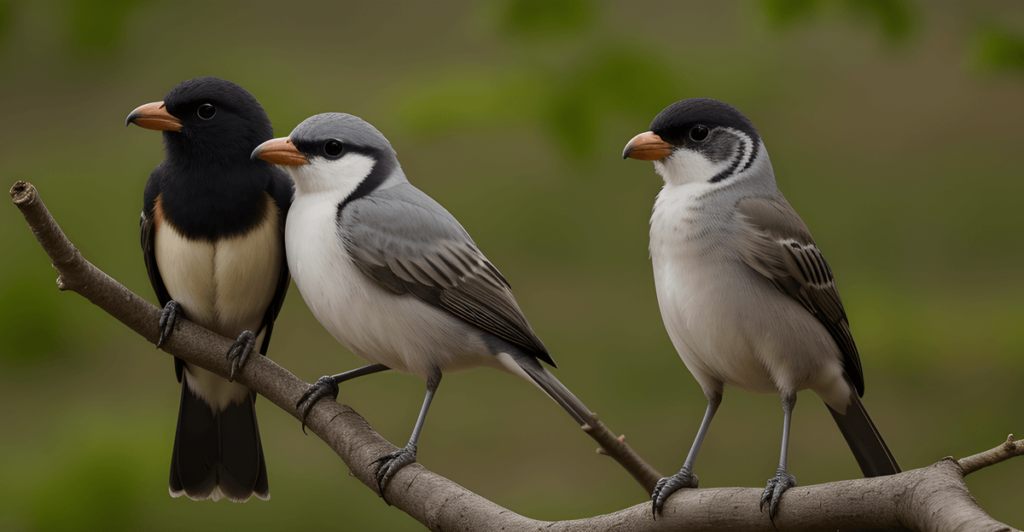
Benefits of Monogamy in Birds
The role of monogamy in birds ensures that each partner has a reliable mate for mating seasons. This stability reduces competition for mates within the species, allowing them to focus on other aspects such as finding food or building suitable nests.
Moreover, monogamous pair bonds provide emotional support to the individuals involved. Having a consistent partner helps reduce stress levels and provides companionship throughout their lives.
Personal Information: I find it fascinating how monogamous pair bonds contribute not only to reproductive success but also to emotional well-being among bird species. Observing these behaviors in nature gives us insights into the diverse ways animals form relationships.
Dominance Dynamics
In some cases, pair bonding can involve elements of dominance within the relationship between male and female birds. One partner may take on a more dominant role while the other assumes a subordinate position. However, this dynamic doesn’t necessarily diminish the strength of their bond; rather, it establishes clear roles within their partnership.
These dynamics are often observed during courtship rituals where one bird may display certain behaviors indicating its willingness to bond with another individual. These displays can include intricate dances or vocalizations that signify readiness for pairing up with a potential mate.
Communication and Emotional Intelligence Amongst Birds
Expressing Emotions
Birds communicate emotions through vocalizations, body language, and facial expressions. For instance, when a bird fluffs its feathers or bows its head, it may signal submission or affection. This ability to express emotions enables them to convey empathy, distress, or affectionate gestures.
In some species of birds, the males engage in intricate courtship displays involving singing and dancing to attract potential mates. These elaborate rituals showcase their emotional intelligence and the ways birds establish connections with one another within their flock.
Social Dynamics
Emotional intelligence among bird species plays a crucial role in navigating complex social dynamics within the flock. It allows them to form valuable insights into each other’s intentions and feelings. Whether it’s forming friendships or selecting mates for nest building, these interactions highlight the depth of emotional connection present among birds.
The sense of connection is further emphasized by behaviors such as mutual preening where two birds groom each other’s feathers as an expression of care and bonding. This act not only strengthens their bond but also serves as a way for them to convey affection toward one another.
I once observed a pair of mourning doves engaging in what seemed like a tender moment – they were nestled closely together on a branch, gently touching beaks before flying off together. It was heartwarming to witness such an intimate display of emotion between these beautiful creatures.
Social Grooming and Regurgitation as Affection in Birds
Social Grooming
Social grooming is a crucial aspect of bird behavior, promoting hygiene and strengthening social bonds within the group. Birds engage in mutual preening to remove dirt, parasites and damaged feathers from each other. This intimate interaction not only helps maintain their physical well-being but also fosters trust and cooperation among flock members.
This behavior involves physical contact, where birds use their beaks to groom one another’s feathers meticulously. For example, cormorants are known for sunbathing while spreading their wings to dry them out after diving for fish. During this time, they often engage in social grooming by pecking at each other’s necks or heads.
I find it fascinating how these seemingly simple acts of cleaning play a significant role in reinforcing social ties and maintaining overall health within bird communities.
Regurgitation as Affection
Another intriguing display of affection among birds is regurgitation. This behavior serves as an affectionate gesture during mate feeding and parental care activities. For instance, male penguins regurgitate food for their mates during courtship rituals as a way to express devotion and strengthen their bond.
In addition to mate feeding, regurgitation plays a vital role in parental care by allowing adult birds to provide nourishment to their young ones. The act of regurgitating food demonstrates nurturing instincts while reinforcing the bond between parents and offspring.
The concept of regurgitated food may seem unusual from a human perspective, but it showcases the depth of emotional connections that exist within avian relationships.
Distinguishing Between Aggressive and Affectionate Behaviors in Birds
Aggressive Behaviors
Aggressive behaviors in birds serve to establish dominance, defend territory, or protect mates. They can include territorial defense, threat displays, and physical confrontations. For instance, when a bird puffs up its feathers and makes loud vocalizations to ward off intruders from its nesting area, it is displaying aggressive behavior. These actions are aimed at protecting their space or resources.
Understanding these behaviors is crucial for bird enthusiasts as it helps them recognize signs of distress or discomfort in their feathered companions. By being able to identify aggressive behaviors such as pecking, lunging, or chasing other birds away from food sources or perches, individuals can take steps to reduce stressors within the environment.
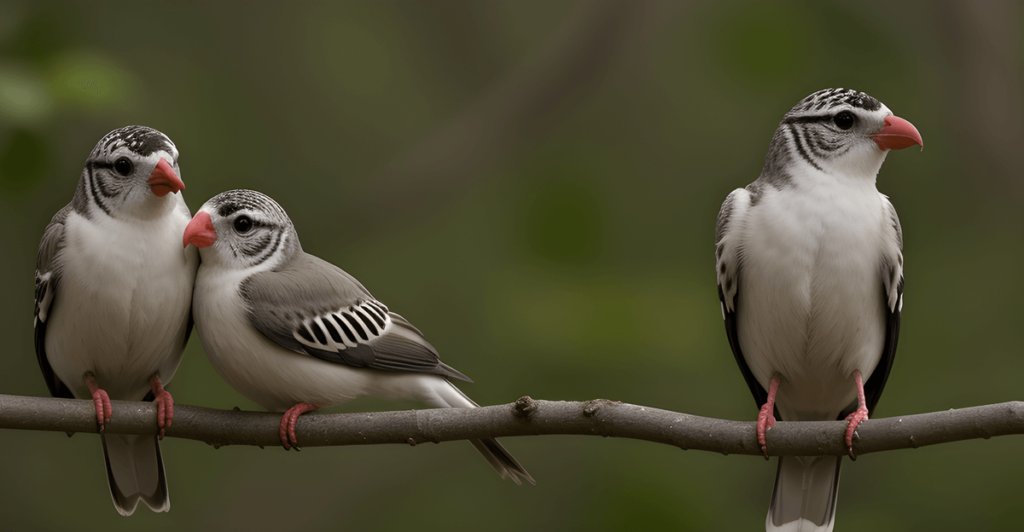
Affectionate Behaviors
On the other hand, affectionate behaviors among birds are characterized by gentle touches, mutual preening (grooming each other’s feathers), and close proximity without aggression. When two birds engage in mutual preening by gently nibbling at each other’s feathers with their beaks – a behavior known as allopreening – they express trust and bonding with one another.
Recognizing these subtle cues of affection allows avian enthusiasts to gauge the well-being of their pets more effectively. Observing activities like bill tapping (gentle pecks on the beak) between bonded pairs indicates a strong social bond and reinforces positive interactions within an aviary setting.
Personal Insight: As an avid bird watcher myself, understanding the nuances between aggressive and affectionate behaviors has been invaluable during my observations of various bird species in the wild. It has allowed me to appreciate the complexities of avian communication while also ensuring that I don’t inadvertently disrupt natural interactions through misinterpretation.
Understanding Human Interaction with Pet Birds and Safety Concerns
Positive Reinforcement Training
Using positive reinforcement training is essential for encouraging desired behaviors. This method involves rewarding the bird when they display the behavior you want to reinforce. For instance, if a bird gently nibbles your finger instead of biting, offering a treat or verbal praise can reinforce this positive behavior. By consistently rewarding these actions, the bird learns what pleases their owner and is more likely to repeat them.
Positive reinforcement also applies to teaching birds specific tricks or commands. For example, by rewarding a parrot with its favorite snack every time it correctly identifies an object or performs a trick on command, the bird associates the action with something enjoyable and will be motivated to continue doing so.
In my experience as a pet parent of birds, I’ve found that positive reinforcement not only helps in shaping desirable behaviors but also strengthens the bond between humans and their avian companions.
Safety Concerns
Ensuring the safety and well-being of pet birds involves providing them with a secure environment, proper diet, and regular veterinary care. When considering potential health risks for pet birds due to human interaction, owners must maintain hygienic practices around their feathered friends. This includes washing hands before handling the bird or its food and ensuring that any visitors do so as well.
Creating a safe living space for pet birds means securing windows and doors when they are out of their cages to prevent accidents like flying into glass panes or escaping outside. Using non-toxic cleaning products in areas where birds reside is also important since they can be sensitive to chemicals commonly found in household cleaners.
As someone who has cared for pet birds for many years now, I have learned how vital it is to provide an enriching yet safe environment for these intelligent creatures while being mindful of potential hazards within our homes.
Understanding Avian Body Language
Understanding avian body language plays a pivotal role in interpreting pet bird behavior accurately. Recognizing signs of distress versus contentment allows owners to respond appropriately based on their understanding of how their feathered companions feel at any given moment.
For instance:
- A relaxed posture with feathers sleeked down indicates comfort.
- Fluffed feathers may signal illness or discomfort.
- Dilated pupils might suggest excitement or fear depending on other accompanying body language cues such as vocalizations or head position.
Final Remarks
Well, there you have it! We’ve delved into the fascinating world of bird behavior and explored the intricate dynamics of avian affection. From courtship rituals to social grooming, it’s clear that birds have their unique ways of expressing love and forming bonds. Understanding these behaviors not only deepens our appreciation for the natural world but also sheds light on the diverse forms of emotional intelligence across species.
So, next time you spot a pair of lovebirds in your backyard or visit a pet store with chirping companions, take a moment to observe and appreciate the subtle nuances of their interactions. Perhaps we can learn a thing or two about love and connection from our feathered friends. After all, nature has its way of teaching us valuable lessons if we’re willing to pay attention.
Frequently Asked Questions
Do birds actually kiss each other?
Yes, birds do exhibit behavior that resembles kissing. This behavior is often a part of courtship and bonding rituals among bird pairs. It involves beak touching or bill tapping, which serves as a form of communication and strengthening of the pair bond.
What is the significance of “kissing” in bird behavior?
The act of “kissing” among birds plays a crucial role in their courtship rituals and pair bonding. It serves as a way for birds to communicate affection, strengthen their connection, and establish trust within their monogamous relationships.
How do birds display affection towards each other?
Birds express affection through various behaviors such as grooming each other, regurgitating food to share with their partner or offspring, and engaging in physical gestures like bill tapping or mutual preening. These actions help reinforce social bonds and maintain strong connections within bird communities.
Can aggressive behaviors be mistaken for affectionate behaviors in birds?
It’s essential to distinguish between aggressive and affectionate behaviors in birds. While some actions like beak pecking may seem aggressive, they can also serve as playful interactions or displays of dominance within the flock. Understanding context and body language helps differentiate these behaviors accurately.
Is it safe for humans to interact closely with pet birds?
When interacting with pet birds, it’s important to consider safety concerns such as avoiding sudden movements that may startle them or being mindful of potential bites from unfamiliar or stressed birds. Building trust through gentle interactions fosters positive relationships between humans and pet birds while ensuring their well-being.
